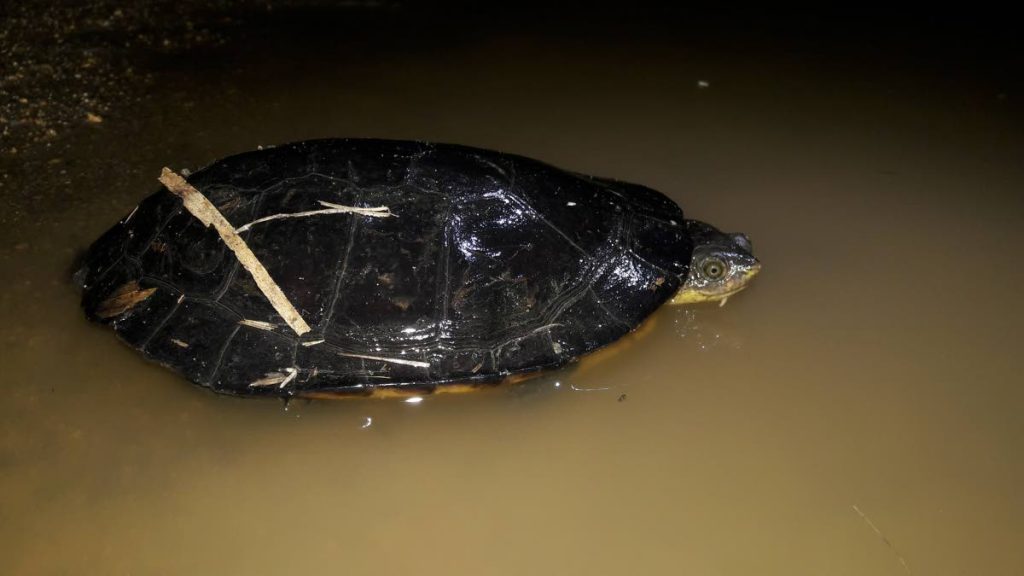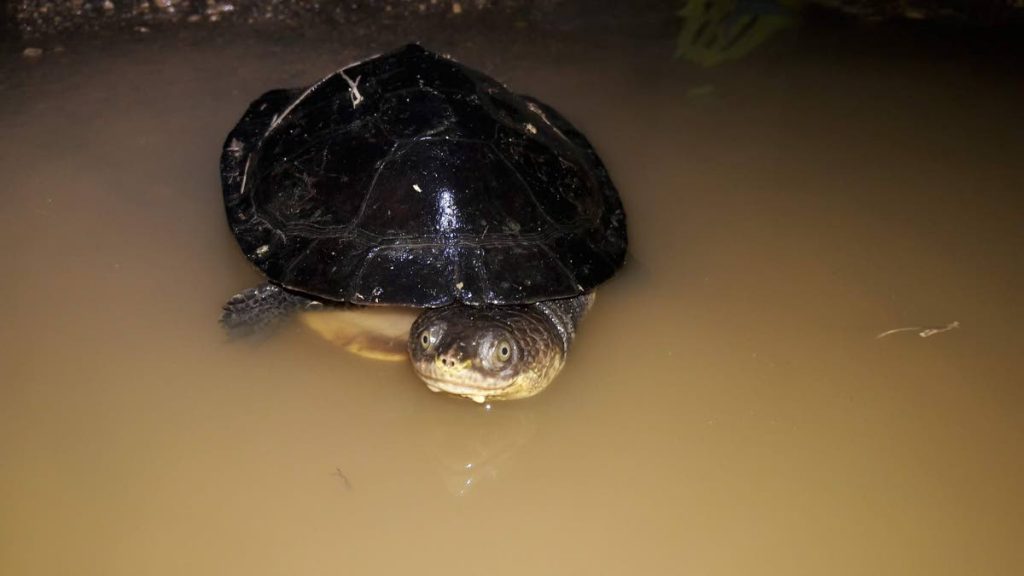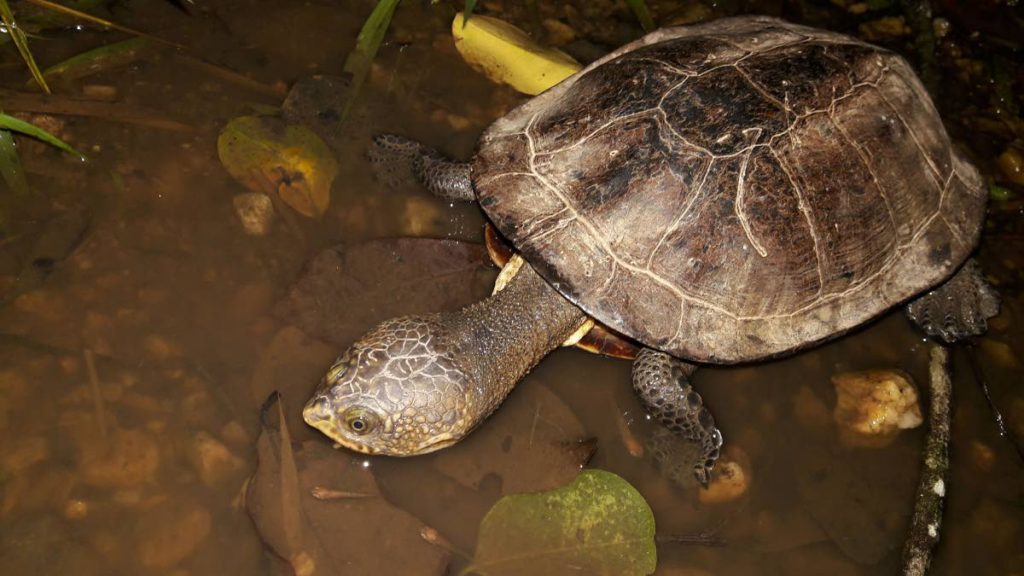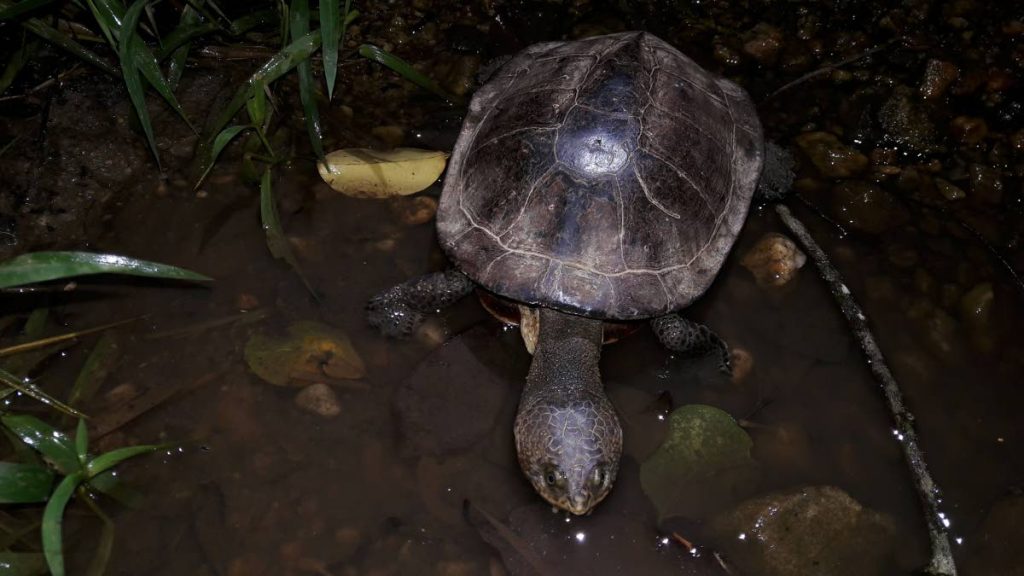Mysterious gibba turtle hard to find in Trinidad

When you think about turtles in Trinidad and Tobago, do you think about popular sea turtles like the leatherback and hawksbill turtles?
While these sea turtles are iconic and beloved, herpetologist Renoir Auguste also wants you to start thinking about the lesser-known freshwater turtles.
For Auguste, it’s important that people know more about TT’s freshwater turtles because apart from being interesting, they also play vital ecological roles.
Auguste told Newsday Kids, “I think less people are familiar with freshwater turtles. So I think it’s important to talk about them and let people learn more about them, because in general, freshwater turtles are important for freshwater ecosystems.”
Of the three native species of freshwater turtles found in TT, the gibba turtle (Mesoclemmys gibba) is the most mysterious because it is rarely seen.

Outside South America, Trinidad is the only place that gibba turtles are found in the wild. Because they are so hard to find, researchers have been unable to establish an estimate of their population in Trinidad.
Auguste explained that little is known about these turtles in Trinidad, including where they live.
“They are potentially all over Trinidad, but they are just so well hidden.
“Sangre Grande and Moruga are the two areas that I have personally seen them, but there is evidence that they may also be in the Penal area.”
Adding to these turtles’ mysterious nature is the fact that you may not even see them at all during certain months because they aestivate. You may be wondering, what does that mean?
Auguste explained, “During the dry season, these turtles will sometimes aestivate, which is kind of like hibernation, but not entirely.
“They sometimes just spend time hidden underground in mud for like a long extended period, but when it gets rainy and wet, they’ll come out and move about.”

While gibba turtles spend most of their time in water and feed on a variety of aquatic life, including small invertebrates, they do come on land to lay eggs. Sometimes they also surface to feed on fallen fruit because they are omnivores.
In doing so, these turtles are unknowingly carrying out an important ecological function.
“When they feed on these fruits and move them to other areas, they also indirectly contribute to seed dispersal.”

Like other freshwater turtles, gibba turtles also help maintain the health of the watercourses they are found in, by maintaining aquatic vegetation and contributing to recycling nutrients.
But the gibba turtle’s mysterious nature isn’t the only thing interesting about it. These turtles, which grow no more than 30 centimetres in length, have barbels on their chin: sensory organs used to detect the movement of prey underwater.
Auguste explained, “The barbels are one of those things that if vibrations in the ground touches it, it alerts the turtle’s senses to react, especially when they are in murky waters when they can’t see as much.”


Comments
"Mysterious gibba turtle hard to find in Trinidad"